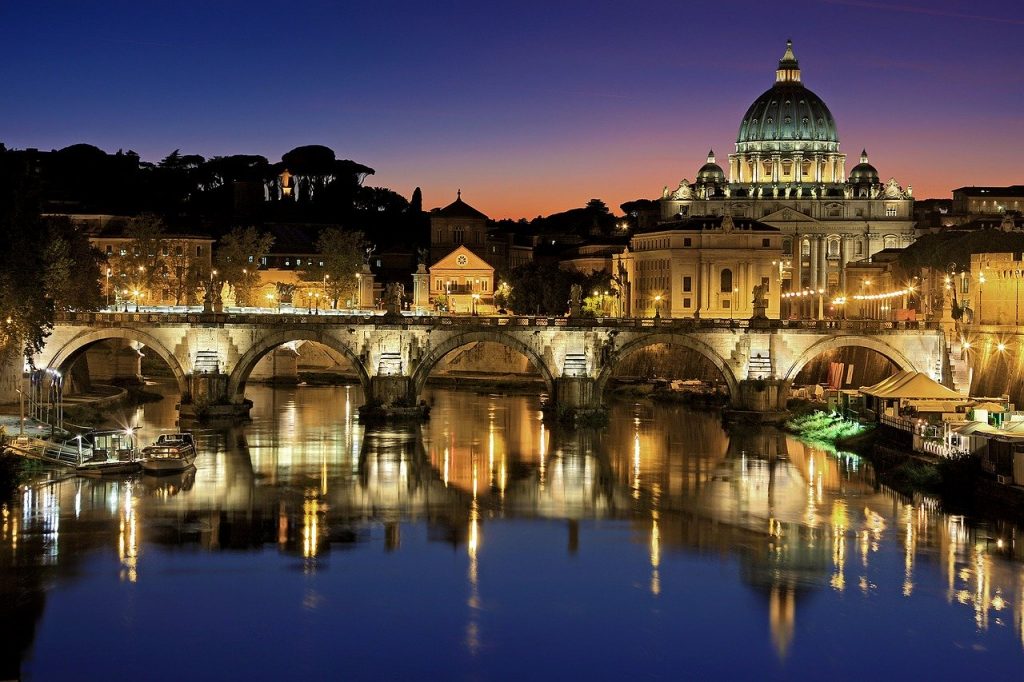Communicating faith, the Green Pope and the ‘brand’ of the Catholic Church
A dissertation summary
About the author
Rosie Heaton graduated this year from Leeds Beckett University. She works as a communications assistant in the Diocese of Salford.

Rosie Heaton summarises her dissertation, submitted towards a Public Relations degree from Leeds Beckett University.

Working for a Catholic international development charity during my sandwich year from Leeds Beckett Public Relations undergraduate degree had a huge influence on my life. Personally, I found this experience eye-opening.
The tireless commitment of the people I met, guided by their faith, had made huge changes to both policy here in the UK, as well as to the lives of people living in poverty thousands of miles away. As a communicator, I was fascinated by the influence Church communication can have on wider society, on political discourse and on people of all faiths and none.
It was during this time that I was introduced to Laudato Si’, a document written by Pope Francis – published five years ago – to coincide with COP21 and the creation of the Paris Agreement.
The document was addressed not just to Catholics but to the whole world. For many, it was monumental, shifting the conversation about climate change from a scientific one to a moral one. At its heart was the interconnectedness of everything: a care for creation, our global neighbours, and our common home. The document, rooted in prayer, called for all people to undertake an ‘ecological conversion.’
Rationale and methodology
Laudato Si’ provided many of the people I met with a language to speak in which tied together faith and their beliefs in environmentalism.
The Catholic Church has faced reputational damage in recent years and I wondered how the application of communications and branding techniques worked in this context.
My dissertation research sought to understand, in the context of Catholic environmentalists, if it was ever useful or appropriate to consider the Catholic Church a brand and whether Laudato Si’ had impacted how Catholic environmentalists view the Church.
To find this out, I adopted a mixed-method approach which focused primarily on gathering qualitative data. I broke the term ‘Catholic environmentalist’ down into three more specific participant groups. I focused on: members of the clergy, the response from official Church agencies, and the response from grassroots campaigners in parishes. The thoughts of a further sixty Catholic environmentalists were gathered through an online survey. As a result of this, I was able to identify several key themes, which I explore more below.
The Church as a brand
When asking whether the Church could be considered a brand, I received an interesting response. Unsurprisingly, ‘brand’ was perceived as a heavily loaded term linked with commodification and faceless businesses. However, when language linked with corporate communications was slightly altered to reflect the potential benefits of professional communications and to reflect the Mission of the Church and the idea of evangelisation, the concept became more appealing.
An overwhelming majority of respondents believed that using different methods of communication was appropriate and useful to the Church, as long as the content was authentic, and the Church was seen to be communicating with integrity.
Another interesting element in this theme was the brand of Pope Francis himself and the impact that his pontificate has had in reinvigorating what it means for many participants to be Catholic. Interestingly, Pope Francis and the Catholic Church were often viewed as separate entities: the Pope referred to as inspiring, empowering, radical and human, the Church as more traditional and hierarchical.
My research concluded that there is some value in considering the Catholic Church a brand. If you were to view the Church as a brand, it is in an incredibly strong position. Its members have incredible amounts of brand loyalty – in Catholic environmentalists, particularly towards Pope Francis – with ambassadors forming local, national, and international brand communities. However, this conclusion should not be oversimplified.
While the Church can benefit from the application of professional communication, it is important to remember that faith is not a product to be sold.
Faith is an incredibly important element of the identity of those who are Catholic, and faith is a vocation which shapes the Church’s members’ lives.
The Influence of Laudato Si’
For the Catholic environmentalists who took part in my dissertation project, to be Catholic and to care about the environment were two elements of their identities which were closely intertwined and of equal personal importance.
The publication of Laudato Si’ provided an opportunity for people of faith who were passionate about the environment to reconnect these issues, validating and reaffirming their beliefs. Laudato Si’ was frequently described as bringing a narrative of hope and joy to what is often a challenging issue, in some ways reinvigorating members’ experience of what it is to be Catholic.
While some responses to Laudato Si’ have been positive, participants shared their concern that this is not always shared by all, and awareness may not be as high in your ‘average’ Catholic in the pews (though it was noted that most people will know the Church has a strong stance on environmentalism).
This lack of awareness was put down in part to the mixed response from members of the clergy due to the growing pressure they find themselves under (therefore the message is not reaching Mass-going Catholics), and to ageing demographics within the Church who may not have access to digital communication. For many, Laudato Si’ was one element of a growing awareness of environmentalism, bringing a unique and compelling argument for Catholics to consider environmentalism, and packaged alongside secular messaging from ambassadors such as David Attenborough and Greta Thunberg.
To apply corporate language, and at the risk of reducing its impact, Laudato Si’ has certainly been an important tactic in defining Pope Francis’ pontificate and in improving the brand image of the Catholic Church, particularly impacting on how Catholic environmentalists’ view and experience the Church.
Summary
I am keen that my research is not misconstrued or oversimplified. Despite there being value in applying professional communications and branding theory to the Church, to its members it is much more than that and should be treated as such. The world is changing. The Church faces a challenge in remaining relevant in today’s society, while upholding its traditions.
Strong, authentic communication is key in responding to this challenge.